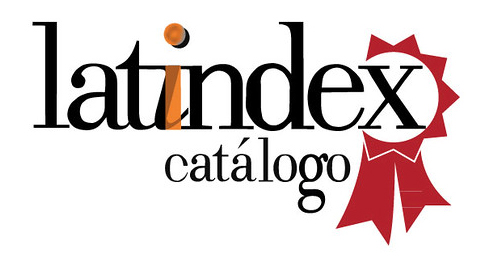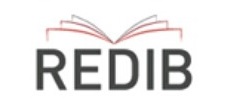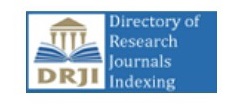Enviromental impact comparative tool based on life cycle assesment = Herramienta comparativa de impacto ambiental basada en método de análisis de ciclo de vida
DOI:
https://doi.org/10.20868/bma.2017.1.3520Keywords:
Enviromental impacts, Sustainability, Life cycle assessment, Building assessment tools, Façade comparative assessment, Impacto mediambiental, Sostenibilidad, Análisis de ciclo de vida, Herramienta de edificación, Análisis comparativo de fachadas.Abstract
Abstract
The Life Cycle Assesment LCA is a method used to quantify the environmental impact of a product or service along their life cycle. The tool offered is based on the LCA and will provide an easier and a visual comparative report to assess the impacts generated by two different facade's construction solutions. The source of the results are feed from a database composed of data from the Environmental Product Declaration which is a mechanism used for environmental communication. The Environmental Product Declaration is the most prestigious and well recognized mechanism due to the objectivity incurred on the data collection process. The tool enables selecting various facade's configurations through the combination of different layers. It was decided not to evaluate the actual environmental impacts with the aim of building a decision making tool where the technician will be able to go in depth for the specific impact of each material and identify and approach the important focal points using the comparative report. The LCA simplified tools represent a compromise for a precise evaluation, but it will be necessary to be realistic and transparent about their limits as stated at the end of the paper.
Resumen
El Análisis de Ciclo de Vida (ACV) es un método que sirve para cuantificar el impacto ambiental de un producto o servicio durante su ciclo de vida. La herramienta que se presenta pretende, basándose en este método, proporcionar de forma simplificada y visual un informe comparativo de los impactos que generan dos soluciones constructivas de fachadas. Los resultados se nutren de una base de datos formada por datos de Declaraciones Ambientales de Producto, mecanismo de comunicación ambiental que goza actualmente de mayor prestigio debido a la objetividad en el proceso de obtención. La herramienta permite seleccionar distintas configuraciones de fachada mediante la combinación de diferentes capas. Se ha decidido no ponderar los impactos con el fin de la herramienta sea un asistente de decisión, donde el técnico pueda profundizar hasta el impacto específico de cada material para poder identificar los focos graves de impacto y actuar en consecuencia, teniendo siempre como referencia el carácter comparativo del informe. Las herramientas de ACV simplificadas representan un compromiso en la precisión de la evaluación, pero es necesario sean realistas y transparentes respecto a sus límites, que se presentan al final del escrito.
Downloads
References
Arias Cañete, M. 2016. Porcentaje equivalente a una reducción de las emisiones del 60% con respecto a 2010. Comisión de Energía y Clima.
Real Decreto 314/2006, de 17 de marzo, por el que se aprueba el Código Técnico de la Edificación.
Real Decreto 47/2007, de 19 de enero, por el que se aprueba el Procedimiento básico para la certificación de eficiencia energética de edificios de nueva construcción.
Real Decreto 105/2008, de 1 de febrero, por el que se regula la producción y gestión de los residuos de construcción y demolición.
COM (2005) 670 Estrategia temática sobre el uso sostenible de los recursos naturales. Comunicación de la Comisión de 21 de diciembre de 2005.
Huedo, P.; López-Mesa, B. (2013) Revisión de herramientas de asistencia en la selección de soluciones constructivas sostenibles de edificación. Inform. Construcc. 65 [529], 77–88. http://dx.doi.org/10.3989/ic.11.048.
Abelleira Sánchez, 2011. Aplicación del software bees v.4.0 como herramienta de ACV en la construcción. TFM de la Universitat Poltècnica de Catalunya. p25.
Society of Environmental Toxicology and Chemistry (SETAC) - Society of Environmental Toxicolgy and Chemistry.
IHOBE, 2015. La Declaración Ambiental de Producto. Ihobe, Sociedad Pública de Gestión Ambiental Departamento de Medio Ambiente y Política Territorial Gobierno Vasco.
Ros, T., 2012. Desarrollo de una herramienta ágil y eficiente para el análisis y la comunicación ambiental. Congreso Nacional e Medio Ambiente 2012 In Madrid.
Iglesias, D.H. 2005. Relevamiento exploratorio del Análisis del Ciclo de Vida de productos y su aplicación en el sistema agroalimentario. Contribuciones a la Economía, 2005
Cebrián-Tarrasón, D., Garraín, D., París, A., Vidal, R. (2009, 8-10 de julio). ACV libre: la Utilización del ELCD en la Fase de Diseño. Actas del XIII Congreso de Ingeniería de Proyectos (AEIPRO). Badajoz.
AMEC (2013) The opportunities to business of improving resource efficiency. European Comission Report.
Cambridge Econometrics, (2014). Modelling the economic and environmental impacts of change in raw material consumption.
Eurobarómetro Flash 388 (2014) Attitudes of Europeans towards waste management and resource efficiency.
Herrmann, I.T. & Moltesen, A., 2015. Does it matter which Life Cycle Assessment (LCA) tool you choose? - A comparative assessment of SimaPro and GaBi. Journal of Cleaner Production, 86, pp.163–169. Available at: http://dx.doi.org/10.1016/j.jclepro.2014.08.004.
Kovacic, I., Waltenbereger, L. & Gourlis, G., 2016. Tool for life cycle analysis of facade-systems for industrial buildings. Journal of Cleaner Production, 130, pp.260–272. Available at: http://dx.doi.org/10.1016/j.jclepro.2015.10.063.
Cabeza LF, Rincón L, Vilariño V, Pérez G, Castell A. (2014) Life cycle assessment (LCA) and life cycle energy analysis (LCEA) of buildings and the building sector: A review. Renew Sustain Energy Rev 2014; 29:394–416. http://dx.doi.org/ 10.1016/j.rser.2013.08.037..10.063.
UNE-EN ISO 14040:2006 Gestión ambiental. Análisis del ciclo de vida. Principios y marco de referencia. (ISO 14040:2006).
Muro Pereg, J.R., 2013. Análisis de Ciclo de Vida de 1kWh Generado por un Parque Eólico Onshore GAMESA G90-2.0MW. Proyecto ECOWIND.
Antón Vallejo, Ma Asunción (2004). Utilización del Análisis del ciclo de vida en la evaluación del impacto ambiental del cultivo bajo invernadero mediterráneo. Universitat Politècnica de Catalunya. Departament de Projectes d'Enginyeria. Tesis. ISBN8468867322
Guinée, J. Int J LCA (2001) Handbook on life cycle assessment - Operational guide to the ISO standards. International Journal of Life Cycle Assessment, 6, 255-255. DOI: 10.1007/bf02978784
T. Rist, 2011, A path to BIM-based LCA for whole-buildings [M.S. thesis], Norwegian University of Science and Technology.
Verghese KL, Horne R, Carre A. PIQET: the design and development of an online ‘streamlined’ LCA tool for sustainable packaging design decision support. International Journal of Life Cycle Assessment 2010; 15(6): 608–620. DOI: 10.1007/ s11367-010-0193-2
Página Web del INIES. http://www.inies.fr/accueil/. Consultada por última vez en Abril de 2017.
Anand, C.K. & Amor, B., 2017. Recent developments, future challenges and new research directions in LCA of buildings: A critical review. Renewable and Sustainable Energy Reviews, 67, pp.408–416. http://dx.doi.org/10.1016/j.rser.2016.09.058.
Moran del Pozo J, Juan Valdés A, Aguado P, Guerra M, Medina C. 2011. Estado actual de la gestión de residuos de construcción y demolición: limitaciones. Informes de la Construcción; Vol. 63:p. 89–95. https://doi.org/10.3989/ic.09.038
Downloads
Published
Issue
Section
License
The originals of Building & Management magazine are property of the Universidad Politécnica de Madrid, being necessary to cite the origin of any partial or total reproduction.
All the original articles published in Building & Management are subject to discussion and comments from our readers. Opinions should be sent to the journal's email address, within a period of three months, starting from the date of publication.
Authors retain the copyright of the papers and ensure B&M the right to have a Creative Commons license, Attribution-NonCommercial-NoDerivatives 4.0 International (CC BY-NC-ND 4.0), that allow others to share the article within an author recognition and non commercial use.
Authors can also establish independently aditional agreements for the not exclusive distribution of the article published versión in the e-journal (as, for example, to place it in an institutional repository or to publish it in a book).
Unless otherwise indicated, all contents of the electronic edition of Building & Management are distributed under a Creative Commons license and distribution.




 <
< 








